NIKON VERSUS CANON, ...
... or how to move from brand to brand and back again in one month.
Sometimes I wonder, if painters argue in the blood of internet discussions about whether a brush made of marten or polecats is better for oil painting. Or squirrels. One group defends martens in the blood, the other polecats and they are willing to fight over it. Squirrels watch it from a distance and many struggle with the seductive idea of deserting to polecats or martens, to get also an incredible line like W. X. or Y. Z. Or sculptors, whose chisel is better at chipping the right piece from the sandstone, so that the sculptured person looks like a hero and not a frightened coward.
In any case, to mention in any photographic debate whether Nikon or Canon is better is a guarantee of a cruel, ruthless and bloodthirsty debate, called flame. However, since there is no forum on my site, I embark on this topic with ease and without worry.
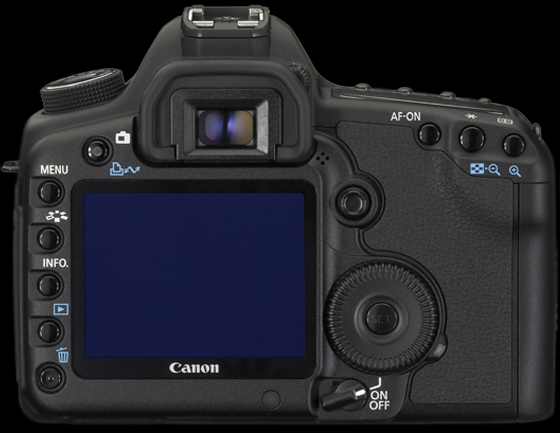
When I recently sold a barely a month old Canon EOS 5D Mark II with a 24 - 70 mm/2.8 L lens, I had no idea, how many people would ask me why I was selling this great camera, they were considering with the Nikon D700, and what makes Nikon so special, that he made me do this, for many, completely absurd grand circle, which didn't pay off financially at all, but brought me many fundamental findings for the future.
So why did I decide to switch from the Nikon D700 and D300 to the Canon EOS 5D Mark II?
Resolution. Magnification is not a problem, but the amount of detail. Also, the colors are more accurate and cleaner. From 12 Mpx FF D700 with sharp prime lens and a high-quality interpolation program, you can print a high-quality enlargement 150 x 100 cm. But because the manufacturers condemned us to Bayer's darkness for their profit and convenience, from e.g. 40 Mpx digital back we get the real 11 Mpx and the rest is back-interpolated by the device to a marketing acceptable value. I was thinking about D3x, but I will use large body minimally and I will also regret the second card (none of them ever betrayed me, so probably because). However, I always suffer from the loss of fine details in the image, which is why I decided to take such a crucial step.
Possibility to try. My friend John bought the above-mentioned Canon set two years ago on my recommendation and is very satisfied with it. He willingly lent it to me several times to try. I always came back to him with the feeling, that Nikon was just as better, but some things, that the yellow-blacks couldn't do at all, were bothering me.
Marketing. Canon has first full frame sensor. Canon produced the first digital SLR available. Canon has its own sensor development, etc. After a few years 5D II, there is still not FF 20 and more Mpx alternative to (albeit excellent) D700. Nikon still owes us a lot here.
Back display and Live View. The rear display on the 5D II is a bit inventive. So beautiful colors and gradients ... You will no longer see them on the computer monitor. But when you view the images on the screen, you will be thrilled with how you are doing and how great the light is. Live View not only allows you to preview the depth of field (ehm. Nikon ... what do you say?), but most of all the fantastic Live View mode. With live RGB histograms and one brightness. That's so great, that you will regret the inability to move the focus point to the edges and also its skipping in predetermined positions instead of smooth movement. Nikon's Live View works with the exposure last seen by the metering sensor before the mirror was lowered. So if you then switch on two kilowatt lights, the measured values will not change.
Change. I have been taking photographs with Nikons for years and last time I have had a desire for some bigger change. That I forgot about my favorite rule, don't change anything that works, I found out with bitterness only later. It was the same mistake as leaving a great woman just because you've been with her too long ...
The first experience with the new line-up from Canon was excellent. Together it has over two kilograms, in many places you feel cold metal and a bus would hide under the lens hood. During the exposure, it sits very well in the hands due to overweight, ie you will keep easy longer exposures. In addition, the lens and camera look great, dark black with a slight sheen, minimalist shapes, beauty. Tough. Even the card door didn't wobble as much with my model as it did with the first pieces (or they would just start, it's hard to say).
The test images pleasantly surprised me. Twice the resolution against the D700 was visible. Tones and shades appeared in the photographs, which I was sadly used to sacrificing. As a result, many images have been given more depth and space. I seemed to move closer again to the coveted "perfect" photograph, and began to relegate Nikon to the past in my mind.
However, the first problems occurred, when I photographed from the Jested mountain. The Sun peeked out of the low clouds and its rays began to make their way through the thick clouds. Illuminated stripes appeared in the landscape, alternating shadows. The wind was weaker, however, I use a carbon Gitzo tripod with a magnesium ball head of the same brand, and this set, thanks to its rigidity, just doesn't shake something. The pictures on the camera screen looked great. The colors are beautiful, the depth of the space is huge, only ... something was suddenly missing. Yes, each tree had the right number of twigs, sharp and hairless (hairiness is caused by interpolation at too low resolution), but there was nothing in those twigs. As if there was no bark and other textures inside. There was just a brown or green fill. That stopped me a little. At Nikon, hairiness occasionally appeared, but also textures and details. However, I frightened the clouds and brought it to the wind and creeping blur, along with the necessary compromises of the zoom lens. With the instinct of self-preservation of consciousness, I did not successfully perceive that the creeping manifested itself mainly on the contours of the well-spent 62 500 CZK (without VAT).
Other problems did not take long, but these were mainly due to my long past with Nikon.
Switching lever 5D II would certainly stand out well from something that one must activate only soberly and with awareness of responsibility for this act.
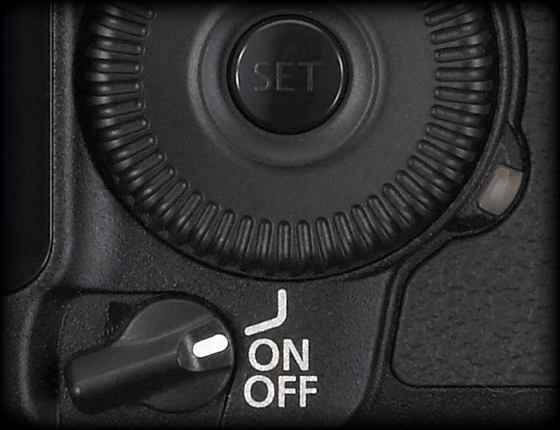
Automatic submarine weapon defense system deep in enemy waters. Or a catapult from the space station into free space for rescue in the event of an accident. But not too much on the camera. In addition, it is not enough to turn it on, you still need to move it so that you can use the large swivel lid at the back. However, to be fair, the device will willingly turn itself off after a while and wake up by pressing the shutter button halfway, which minimizes the use of the unlocker. However, you run the risk of draining the battery if handled carelessly or accidentally. I sadly remembered the Nikon switch under the shutter buttonaccident...
...accidentwhen we're by the wheels. Wheels. Nikon has two, practically the same diameter, one under the shutter release button, which is controlled by the index finger, and one from behind, almost behind the front wheel, which is in great position for your thumb. In addition, it is longitudinally offset by about 5 degrees (it doesn't seem like it looks, but this little thing is exactly what you would miss - try it). Both wheels are rubberized, they move with muffled sounds and I found myself looking for something to readjust so I could turn with them.
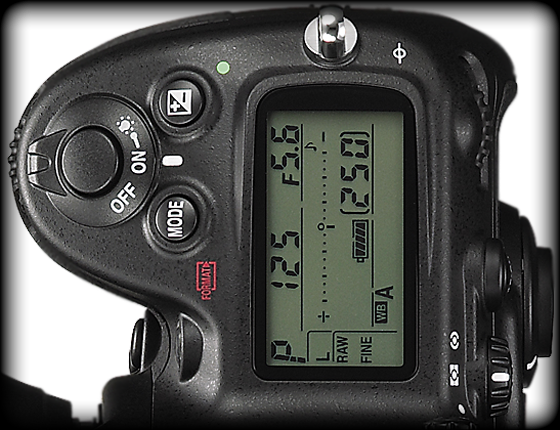
Still, that location + and - it can be turned on the scale, this is really illogical for a European.
The wheels at Canon look a little convulsive against them. The upper wheel at the trigger clicks plastic, is unnecessarily stiff and has too sharp edges. The rear wheel is a bit like the lid from Hoya filters, it is made of low-quality plastic and you turn your thumb out when turning. In addition, it does not work if you have not handled the main unlock correctly, see the previous text.
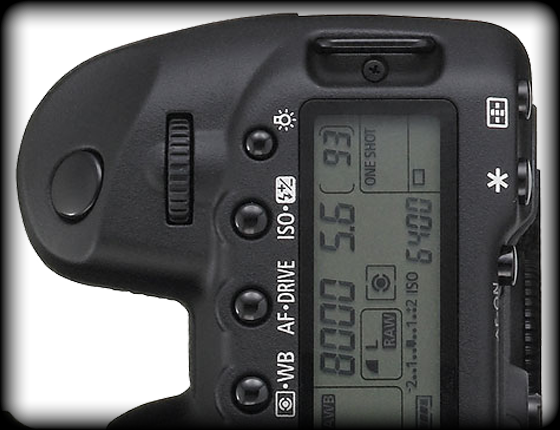
Buttons. For long time Nikon user, the buttons on the Canon are too small and prickly (top of the display), too recessed (next to the rear monitor) and glide when wet (all). For a lover of nice things, they look good, because they are small, black, unprinted and discreet.
Magnification, resp. the image preview disappears after photographing. This is about the same stupidity and ignorance as Nikon's non-measuring Live View. After taking a picture with 5D II, image will appear on the screen. You look at it and notice the corner of the old brick wall, it doesn't look too sharp. In this reduction, it is wrong to judge, so we press the Loupe+ button and ... the preview happily and advantageously disappears. So you press the Play button again, the disappeared image will be displayed again, trying to zoom in ... eureka, it worked. Uff ... It bothers me all the more, because Nikon has an excellent solution here. You can set the middle button in the back cross using the user functions so that when you see a preview of the image on the screen and press this button, you can see the image straight at about 100% magnification. (you need to set Medium Magnification, not Large), ie you assess the sharpness immediately. In addition, the point where it was focused is displayed in the center of the screen. Press this button again to return to the normal view in a size adapted to the full screen.
Magnification ... that also bothered me at this camera. Pampered by the Nikon system, I really did not understand pressing or holding the Loupe+ button and waiting for the desired magnification. And which is actually the right thing to assess the sharpness of the image, ie 100%? When I press it 4x or 5x? Well, how ever ... Sure, it could be calculated from the monitor resolution, but I didn't make it. And I'd still have to count, how many times I pressed the button. You can argue, that I just need more peace and patience ... yes, perhaps, but I'm mainly concerned with the minimal camera distraction at work, and as I'm annoyed by Nikon's awkward Live View, I was also bothered by this.
Focus points. After 52 points with 3D tracking at Nikon, it was another cold shower. The center point works well, the others aren't bad either, but there are desperately few and unnecessarily in the middle (which is generally a problem for cameras with a 36 mm film-sized sensor, for both brands - Nikon and Canon would really go bankrupt, if they stretched the focus points for FF to cover the image field, as is the case with the D300?!) Another thing I started to miss was the intelligent automatic focus point selection. I always despised this until I bought the D300 and tried it. With a fixed focus point, I had about 80% of the sharp images in half-detail in a portrait (head to chest) (on a small sensor, ie at a greater depth of field than on FF), with automatic focus point selection this ratio rose to about 95%! The automatic selection at the 5th is not bad, but again, like the control wheels, it seems a bit convulsive to me - it always focuses steadily on the nearest point in the frame (or within the mini-square of focus points), whether you press the shutter button half the time. In addition to the arsenal of 52 points, Nikon's MultiCam also has a significantly, very much higher intelligence - with a few exceptions, it can guess in almost 90% of cases where I want to focus and put the focus plane there. I didn't understand and I don't understand it, but it is. And it's surprisingly nice and it always makes me happy. In addition, unlike using a single point, where at times, as with any brand, AF cuts back- or front focus like nothing, the focus is almost always virtually perfect. - As I mentioned - I like, when the camera is a natural extension of myself and doesn't draw the attention of clumsy operators.
Card space door. On the right side of the beautiful, sturdy 5D II body, there is a piece of similarly lousy plastic, from which the back lid (sorry - wheel) is made. Due to its excessive dimensions, the thing (door) is part of the grip for the right hand and as such gets really busy. Apart from the fact, that it sometimes growls, it can wobble very well (and what about water and dust resistance, ehm??). Hold the two-kilogram assembly, where the wobble plastic is. In addition, the door has no spring to open and hold it before you eject and insert the memory card. The Nikon D300 had a locked door, you turned it and the unlocked door opened with a spring, beautiful. With the D700, because it is more expensive, newer, more professional and has a larger sensor, the opening fuse has disappeared (another thing that would make me happy when buying the D3x - there is a door secured like a red knob in the Pentagon). But the creators of the D700 have managed to make the door at least small, recessed and thin, so they are not immediately where you hold the right grip with your palm and therefore do not suffer as much and wobble very minimally, again thanks to clever construction. They also have at least a spring to open, so the open ones still don't snap like shutters at the cottage.
So much for mechanical differences. The biggest problem, which was ultimately crucial for the sale of the entire set, turned out to be loss of fine details in photographs.
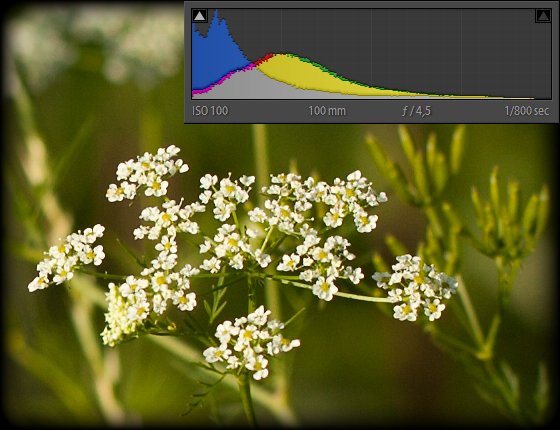
Canon EOS 5D Mark II + Canon EF 100 mm/2.8 L Macro IS USM.
The white flowers are sharp in outline, but all the fine drawing in them is blurred. Even from this detail, however, you can also see the color clarity and spatial impression from the image due to the high resolution of the sensor.
Crop from RAW image in 100% magnification.
Photograph: © Martin Mojzis.
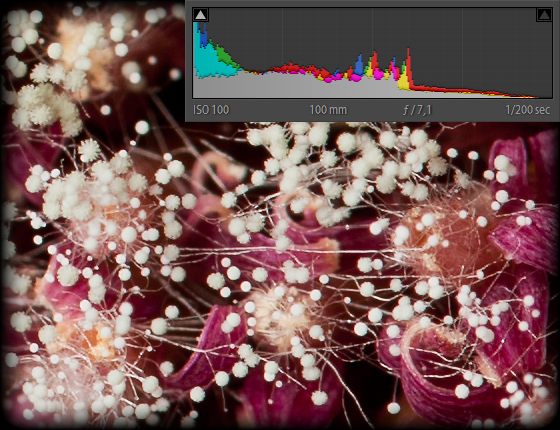
Canon EOS 5D Mark II + Canon EF 100 mm/2.8 L Macro IS USM.
Here, too, it is a problem to find details in the white balls, resp. of course, in those in the field of sharpness,
the image has a reserve in the lights.
Crop from RAW image in 100% magnification.
Photograph: © Martin Mojzis.
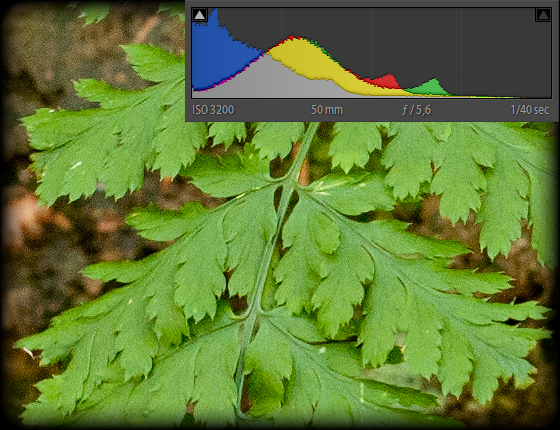
Nikon D700 + AF-S Nikkor 50 mm/1.4 G.
Despite ISO 3200, a high amount of sharp detail is evident.
Crop from RAW image in 100% magnification.
Photograph: © Martin Mojzis.
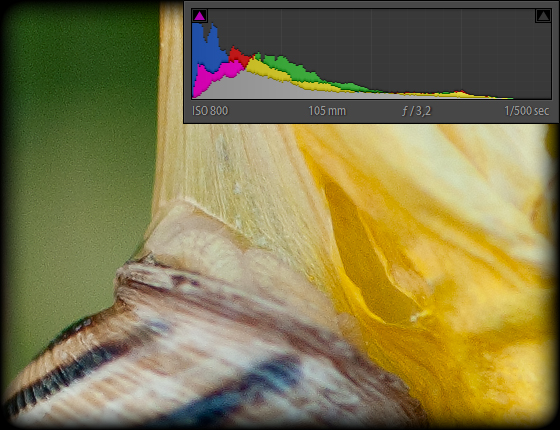
Nikon D700 + AF-S Micro - Nikkor 105 mm/2.8 G VR IF-ED, Nano Crystal Coat.
Again high ISO, this time even a small aperture, drawing in detail nevertheless excellent. Why don't manufacturers of professional DSLRs allow the low-pass filter to be removed?
Crop from RAW image in 100% magnification.
Photograph: © Martin Mojzis.
Because I often photograph jewelry, I had to buy the highest quality macro lens right after a standard variable focal length lens. I opted for the 100 mm/2.8 IS Macro USM L, among other things also for the practical focal length in combination with 24 - 70 mm. I, like everyone else, chose a lens from several pieces. In the first tested, probably one of the optical elements was not completely in the right position, the second was already better. I knew, that now the final verdict of the image quality would probably take place - although prime, e.g. 50 mm/1.8 or 85 mm/1.8 are usually the sharpest lenses ever (for Canon and Nikon, but only good pieces), a professional macro lens should not be left too far behind. Using a variable focal length lens, even of top quality, to evaluate the image quality of a camera is very misleading due to its necessarily very complex optical design.
So I took a few test images. Again, I expected Nikon's tack sharpness combined with greater resolution, plus more depth and space. And again, I was disappointed by the absence of drawing in the finest detail. Because I only evaluated on the display, I bought the lens with the proviso that there will be details on the monitor in the atelier. They weren't. I went to the river with a tripod and tested on plants and insects. Everything was repeated and it was already clear, what I had only guessed so far. The 5D II has, for a professional camera, a very strong low-pass filter, an element in front of the sensor that blurs the finest details to prevent moiré.
In digital backs, this element is user-removable, ie if you do not have moiré in your images, you simply do not use it. In addition, this phenomenon can be eliminated relatively well in graphic software. I don't know, what exactly led Canon to this decision, I did not have the opportunity to try 1Ds Mark III, where the low-pass filter is said to be less effective. This is probably also due to the manufacturer's awareness that due to the favorable price, the 5D II will be used by many non-photographers as a family camera, and the presence of moiré in the images would lead to many complaints and grievances. Or Canon struggled with an already relatively high resolution on a small sensor (again compared to walls). In addition, Canon's optics have been known for decades to be "softer" than Nikkor, whose tack sharpness (I mean monofocal hand-picked lenses, not set super zooms) can cause problems for less experienced users, such as portraits, especially when saving photographs to jpg and not to raw. However, for me, perfect drawing, even in the finest details, is part of the creative expression and also thanks to it I can achieve a high spatial effect in my photographs. Pulling the viewer into the scene and the strongest possible atmosphere in photographs are, what I just can't live without. The only thing I missed with Nikon was the higher resolution, so I decided to experiment with 5D II. It was already clear, that it was a dead end for me. However, I am by no means saying, that the Canon EOS 5D Mark II is a bad camera. It's just not suitable for a long-time Nikon owner, who also has very high demands on the quality of the drawing details. In addition, this article does not want to be a test - it is only a summary of the subjective experience of a professional photographer.
© Martin Mojzis, 2011.
The photographs of the cameras: © Nikon and © Canon press archives.
The photographs were originally prepared for the dark background of the previous site, so those, now not very attractive, dark frames ...
►To the beginning of the article.
►Overview of all articles.
►Homepage.
►Site Map.